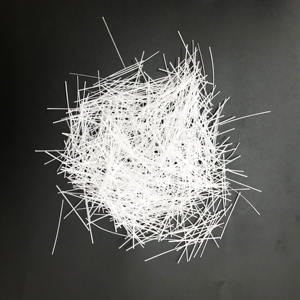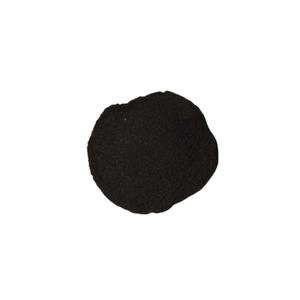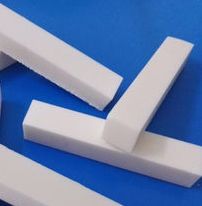Introduction to Polypropylene Fiber: A Game-Changer in Cementitious Composites
Polypropylene fiber has emerged as a transformative additive in concrete modern technology, offering exceptional crack control, influence resistance, and longevity without jeopardizing workability or cost-efficiency. As building needs shift toward sustainability, resilience, and efficiency optimization, polypropylene fibers– artificial, polymer-based filaments– are being increasingly integrated into cementitious systems to improve mechanical homes at both the micro and macro levels. Their extensive adoption reflects a wider industry trend towards sophisticated composite materials that boost architectural longevity while minimizing upkeep and lifecycle costs.
(Polypropylene (PP) Fibers)
Make-up and Physical Characteristics
Polypropylene fiber is stemmed from thermoplastic polyolefin polymers, known for their high chemical resistance, low density (0.91 g/cm ³), and hydrophobic nature. These fibers usually range from 6 mm to 50 mm in length and 10– 50 microns in diameter, with surface area appearances engineered to boost bonding within the cement matrix. Unlike steel fibers, polypropylene fibers do not wear away, making them optimal for settings exposed to dampness, chlorides, or aggressive chemicals. Their melting factor (~ 160 ° C) and relatively reduced modulus of elasticity enable thermal stability and versatility in dynamic loading problems. These qualities make them especially reliable in managing plastic shrinking breaking throughout the beginning of concrete solidifying.
Mechanisms of Split Control and Durability Enhancement
When consistently dispersed throughout the concrete mix, polypropylene fibers serve as micro-reinforcement agents by bridging microcracks that create throughout hydration and early-age shrinking. This device dramatically reduces the size and breeding of splits, enhancing the material’s tensile toughness and power absorption capacity. Furthermore, the existence of fibers impedes the access of water, chlorides, and sulfates, thereby boosting resistance to freeze-thaw cycles, rust, and chemical assault. In fireproof applications, polypropylene fibers play a critical role by producing microchannels during high-temperature direct exposure, allowing vapor pressure to escape and reducing explosive spalling in architectural concrete aspects.
Applications Throughout Civil Design and Infrastructure Projects
Polypropylene fiber-reinforced concrete (PFRC) is currently commonly used throughout diverse building industries. In passage linings and underground structures, it improves fire resistance and resilience under cyclic loading. In industrial floor covering and sidewalks, PFRC boosts abrasion resistance and load-bearing ability while decreasing the requirement for typical mesh support. Marine and coastal infrastructure gain from its rust resistance in saline atmospheres. Additionally, polypropylene fibers are essential to shotcrete applications in slope stablizing and mining because of their capability to boost communication and lower rebound. Their compatibility with automated pumping and spraying systems additionally sustains efficiency in large procedures.
Relative Benefits Over Traditional Support Methods
Contrasted to traditional steel support or artificial choices like glass or carbon fibers, polypropylene fibers offer unique benefits. They are light-weight, non-corrosive, and chemically inert, removing worries related to corrosion discoloration or destruction in time. Their convenience of blending and diffusion guarantees consistent performance without calling for specific tools or labor-intensive placement strategies. From an economic standpoint, polypropylene fibers offer cost-effective reinforcement remedies that lower product use, minimize upkeep regularity, and prolong service life. Moreover, their environmental neutrality and recyclability align with green building standards and circular economic situation concepts.
Technologies Driving Next-Generation Polypropylene Fiber Technologies
Recurring r & d initiatives are pressing the limits of polypropylene fiber efficiency. Surface area modification techniques– consisting of plasma treatment, implanting, and nano-coating– are being checked out to boost interfacial bonding between the fiber and concrete matrix. Crossbreed formulas incorporating nano-silica or bio-based polymers intend to enhance mechanical efficiency and sustainability. Functionalized fibers with antimicrobial or self-healing buildings are likewise under growth to resolve microbial-induced deterioration and autogenous split fixing in concrete structures. On the other hand, clever polypropylene fibers embedded with picking up capabilities are being examined for real-time architectural health monitoring, signaling a brand-new era of smart building materials.
Environmental Effect and Sustainability Considerations
( Polypropylene (PP) Fibers)
While polypropylene is derived from petroleum-based feedstocks, advancements in polymer chemistry and reusing innovations are reducing its ecological footprint. Some producers are introducing bio-based polypropylene variations sourced from renewable feedstocks, minimizing dependency on fossil fuels. Recyclable fiber-reinforced concrete compounds are additionally getting grip, especially in demolition and remodelling jobs where recovered products can be reintegrated into new mixes. Life-cycle analyses show that the long-term resilience benefits of polypropylene fiber exceed preliminary manufacturing exhausts, placing it as a net-positive factor to sustainable construction when used responsibly and successfully.
Market Trends and Worldwide Industry Growth
The international market for polypropylene fiber in building is experiencing consistent growth, driven by climbing need for sturdy, low-maintenance facilities throughout Asia-Pacific, North America, and Europe. Governments and exclusive programmers are increasingly embracing fiber-reinforced concrete in transportation networks, metropolitan water drainage systems, and disaster-resilient real estate. Technological partnerships in between polymer manufacturers and building firms are speeding up product advancement and application-specific customization. Digital tools such as AI-driven dosage optimization and BIM-integrated style are additional enhancing the precision and efficiency of polypropylene fiber applications. As regulatory structures stress carbon decrease and source performance, polypropylene fiber is poised to come to be a conventional element in next-generation concrete specs.
Future Overview: Combination with Smart and Environment-friendly Building Solution
Looking in advance, polypropylene fiber is set to develop along with arising trends in smart framework and sustainable building and construction. Assimilation with Internet of Points (IoT)-enabled monitoring systems will certainly make it possible for real-time responses on structural integrity and fiber performance. Developments in naturally degradable polymers might bring about totally decomposable fiber variants ideal for momentary frameworks or ecologically delicate sites. The convergence of polypropylene fiber innovation with 3D printing, modular building and construction, and AI-assisted material modeling will unlock new style possibilities and efficiency criteria. As the built environment faces increasing environment and functional challenges, polypropylene fiber attracts attention as a flexible, resistant, and progressive solution for reinforcing the foundations of modern people.
Distributor
Cabr-Concrete is a supplier of Concrete Admixture under TRUNNANO with over 12 years of experience in nano-building energy conservation and nanotechnology development. It accepts payment via Credit Card, T/T, West Union and Paypal. TRUNNANO will ship the goods to customers overseas through FedEx, DHL, by air, or by sea. If you are looking for high quality polypropylene fibres, please feel free to contact us and send an inquiry(sales5@nanotrun.com).
Tags: polypropylene fiber, pp fibre, polypropylene fibers for concrete
All articles and pictures are from the Internet. If there are any copyright issues, please contact us in time to delete.
Inquiry us







